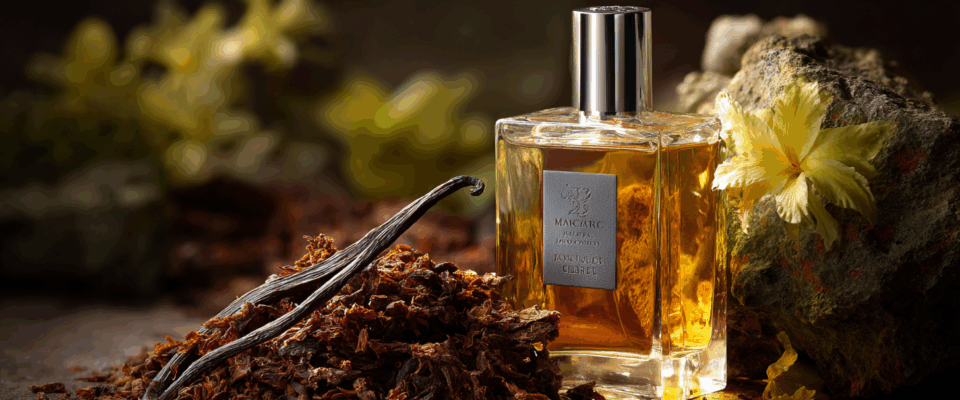Mancera tobacco vanille represents a continuation of a long tradition that links the fragrant world of tobacco with the richness of oriental scent-making. Tobacco first entered perfumery through trade routes that carried dried leaves from distant lands into palaces and markets, where their aroma was admired for its smoky warmth and cultural significance. Unlike fleeting trends, tobacco quickly became associated with rituals, refinement, and stories of travel, embedding itself deeply in the heritage of scent. Its ability to shift from sweet and honeyed tones to dry, leathery undertones made it more than a single note; it became a versatile foundation that anchored complex oriental compositions filled with spices, resins, and woods. For centuries, this adaptability allowed tobacco to serve as a bridge between regions and traditions, shaping how fragrances were crafted and experienced.
As perfumery evolved, oriental inspirations continued to rely on tobacco to provide both depth and identity. The note became an olfactory symbol of exoticism, a reminder of the journeys that connected cultures across oceans. Paired with opulent elements like incense or amber, tobacco helped create powerful, resonant accords that spoke of mystery and luxury. Yet it also adapted to more intimate expressions, softening when combined with smoother notes to become comforting and approachable. This duality—both rugged and refined—ensured tobacco’s place in perfumery as a timeless ingredient. Its oriental origins gave it a narrative power that modern creations still draw upon, preserving the essence of history while inviting contemporary interpretations.
Vanilla as a Bridge Between Cultures
Vanilla’s story in perfumery begins with its status as one of the most coveted spices, carried along trade routes from tropical regions to faraway markets. Its rarity made it a luxury, associated with indulgence and sophistication. Beyond its economic value, vanilla carried a unique olfactory profile: simultaneously sweet, creamy, and sensual. This dual nature allowed it to fit effortlessly into both comforting and seductive compositions. For perfumers, it became a natural mediator, a note capable of softening strong ingredients while adding richness to subtler ones.
When paired with tobacco, vanilla reveals its most compelling role. The sweetness of vanilla cushions the boldness of smoke and spice, while its smooth character weaves contrasts into harmony. This union echoes the cultural blending of civilizations linked through exploration and exchange. Just as spices and goods reshaped cuisines and customs, vanilla transformed tobacco from rugged intensity into refined elegance. Together, they embody a cultural dialogue, a fragrance language that transcends geography and time, leaving a trail of unity in diversity.
Mancera’s Signature Approach to Blending
Designing a memorable fragrance involves more than selecting notes; it requires an artistic vision that shapes how each element unfolds over time. A distinctive approach focuses on contrasts that gradually merge into seamless harmony. In the context of tobacco and vanilla, this means allowing rugged smokiness to meet soft sweetness in carefully measured doses. The blend must feel bold enough to command attention yet refined enough to remain elegant, striking a balance between force and finesse.
Supporting notes are equally crucial in this process. Spices like cinnamon or clove may intensify warmth, while woody tones provide grounding depth. Resinous accents add body, ensuring the fragrance lingers with sophistication rather than fading abruptly. Layering these elements allows the scent to evolve throughout the day, revealing hidden aspects that keep it intriguing. The artistry lies not only in the pairing of tobacco and vanilla but in the orchestration of their surroundings, turning the fragrance into a story that develops with every moment.
The Role of Exotic Plants in Modern Perfumery
Exotic plants continue to shape the identity of contemporary perfumery, offering ingredients that carry both rarity and narrative power. They bring more than unique aromas; they symbolize journeys, cultural exchanges, and hidden treasures of distant landscapes. Ingredients such as rare blossoms, resins, or roots enrich perfumes with textures that cannot be replicated by synthetic substitutes. Their inclusion appeals to the desire for authenticity, creating an emotional connection between the wearer and the natural world.
Integrating exotic plants with familiar accords like tobacco and vanilla creates compositions that stand apart. These pairings allow fragrances to combine stability with novelty, honoring tradition while pushing creative boundaries. In a competitive market, this uniqueness becomes essential, as it grants each perfume a distinct signature that resists imitation. Beyond artistry, exotic plants remind wearers of stories embedded in nature, turning a fragrance into both a sensory and cultural experience. This role ensures they remain central to innovation in modern perfumery.
Tobacco Vanille as a Reflection of Heritage and Luxury
The fusion of tobacco and vanilla reflects more than aroma; it carries centuries of heritage into the modern moment. Tobacco evokes rituals, craftsmanship, and historical journeys, while vanilla recalls indulgence and global trade. Together, they symbolize the blending of heritage and elegance, forming an accord that is as much about storytelling as it is about scent. This combination resonates deeply with those who view fragrance as a reflection of identity and cultural continuity.
Luxury lies in the ability to transform tradition into timeless artistry. By relying on ingredients that have stood the test of centuries, the tobacco-vanilla accord becomes more than fashionable—it becomes eternal. The blend embodies refinement, richness, and a sense of gravitas that appeals to connoisseurs who seek more than passing trends. It communicates prestige and dignity, reminding wearers that true luxury often comes from honoring the past while presenting it in a form suited to contemporary taste.
Contemporary Interpretations and Lasting Appeal
Contemporary adaptations of the tobacco-vanilla accord show how a classic idea can remain fresh in new contexts. Today’s perfumers experiment with introducing unexpected companions: crisp citrus to brighten heaviness, herbs to add aromatic lift, or gourmand notes to enhance sweetness. These variations respect the integrity of the blend while exploring different moods and styles. This versatility ensures that the combination appeals to diverse audiences, from traditionalists to those seeking innovative twists.
At the same time, the enduring charm of tobacco and vanilla lies in their ability to adapt to different roles. They can evoke intimacy in evening wear, elegance in formal settings, or comfort in daily use. No matter the occasion, the blend retains its recognizable character while allowing space for personal interpretation. This balance between consistency and flexibility explains why it continues to hold relevance across generations.
List of contemporary trends shaping this evolution:
- Inclusion of lighter notes to broaden seasonal appeal
- Integration of sustainable plant sources for eco-conscious luxury
- Use of layering techniques for customizable wear
- Exploration of gender-neutral profiles in fragrance design
- Emphasis on storytelling as part of the scent experience
Through these innovations, the tobacco-vanilla accord proves that tradition and progress can coexist. It demonstrates that exotic plants and historical heritage remain fertile ground for creativity, ensuring the blend’s lasting place in the world of perfumery.
Questions and Answers
Answer 1: Because it can highlight honey-like sweetness or earthy dryness, making it adaptable to spices, woods, and resins while adding depth across fragrance traditions.
Answer 2: It cushions the boldness of smoke and spice, weaving contrasts into harmony and transforming rugged intensity into refined elegance.
Answer 3: They provide uniqueness, authenticity, and cultural depth, giving fragrances distinct signatures that merge tradition with innovation.
Answer 4: Because it unites heritage-rich ingredients that embody refinement, prestige, and timeless artistry rooted in history.
Answer 5: By experimenting with citrus, herbs, or gourmand notes, focusing on sustainability, and exploring gender-neutral profiles while preserving its core identity.

